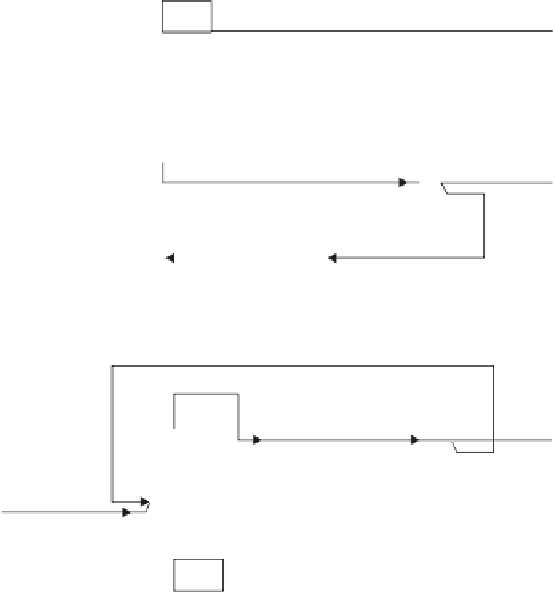Information Technology Reference
In-Depth Information
A method that has much greater potential is applicable when two columns operate
at temperatures such that the overhead temperature of one column is at a higher tem-
perature than the bottoms of the other, and the net reboiler duty of the first is on the
same order of magnitude as the condenser duty of the other. The procedure is to use
one side of a single heat exchanger as the reboiler of column 1 and the other side as
the condenser for column 2. This is illustrated in Figure 14.1. In this example a small
heat exchanger is used to make up for the insufficiency of the net heat flow between
heaters 1 and 2.
One may note that both columns' configurations have changed considerably. The
first column is reconfigured as a refluxed stripper, and only one degree of freedom,
such as the reflux ratio, is available. The bottoms product of the column is split in a
ratio that is equivalent to the second degree of freedom if the column were not energy
integrated: for example, the value of the vapor/distillate ratio, or the flow leaving the
splitter.
The second column is configured as a reboiled absorber, which also has only one
degree of freedom. This could be the boil-up ratio or the bottoms product rate. The
reboiler - condenser is modeled as a pair of heaters with a heat stream flowing from
the condenser half to the reboiler half. The overhead splitter returns reflux after the
overhead flow is condensed by the reboiler - condenser heat exchanger.
D1
DIST1
FD1
6
3
B1
SP1
5
4
HT3
HT1
Q1
9
7
D2
8
HT2
SP2
DIST2
FD2
B2
Figure 14.1
Shared reboiler - condenser flowsheet.


































